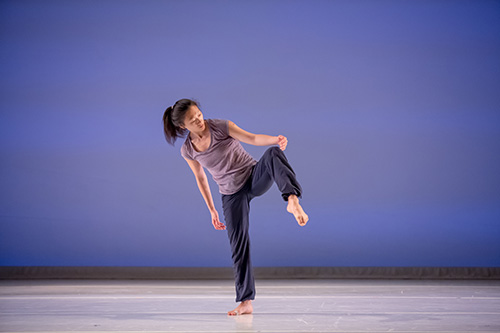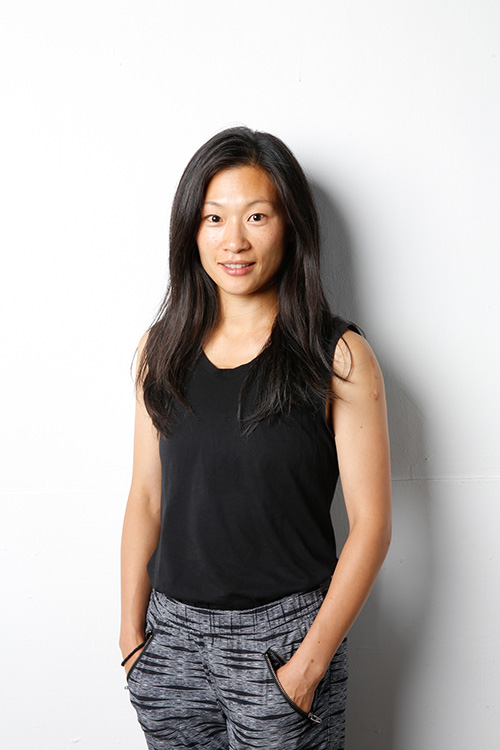I Have Made It, So Now What?
Editorial Note: Each August for the past five years, I’ve asked dance artists at different points in their careers what “making it” means to them. Please join us this month in looking at what “making it” means as a dancer, artist and human.
Peiling Kao, photo by Orfeas Skutelis
BY PEILING KAO
In four more months, I will reach the 10-year mark since moving to the US from Taiwan. In the past decade, I have received my MFA in dance, and have danced for and collaborated with choreographers and interdisciplinary artists in the San Francisco Bay Area. I have also taught dance in dance studios and university settings, and created my own work. Last year, I made a big change and accepted a tenure-track position as Assistant Professor of Dance at the University of Hawaii, Manoa. At the age of 44, one could say that I have “made” my life success. However, when I moved to the US 10 years ago, I never imagined much less planned to be where I am right now. What have I been making? Have I made it? I find this term “made it” to be a point of departure or beginning, not the arrival or the end.
I have prioritized dancing over other life choices since I found my passion for it. Every New Year or birthday, I always have these wishes on my list: I want to keep dancing, stay healthy, happy, and have financial stability. These four factors are simple but challenging to have all at the same time. After graduating from Mills College in 2010, I chose to stay in the Bay Area to keep dancing. I remember asking some local choreographers whom I admired to give me a chance to sit in on their rehearsals or possibly join future projects. I auditioned for dance companies. I took as many classes as I could afford, and made as many connections as possible. I made myself available for all potential opportunities in an unknown future, so I could keep dancing.
This life of minimizing material satisfaction, dealing with injuries, and having to shift gears from one rehearsal to another has given me the joy of being a dance artist. During my time in the Bay Area, I was constantly seeking opportunities to dance, to learn, and to get involved with the community, while also finding the balance between art-making and money-making. “Making” became a living practice, a practice of being a generous, honest and responsible person. I was making dance that spoke to my heart and making my life engage with the community which once was foreign to me. I was beyond lucky to be able to live, explore and participate in the dance scene in various ways, and I couldn’t have wished for more.
Five years ago, I was getting more and more active in performing, dance-making and teaching in the Bay Area. Meanwhile, I started applying for academic jobs, which I hoped might provide better income to support my artistry. I targeted a few geographic locations and dance programs, where I imagined I would possibly fit in. After being turned down and not hearing back from any institutions for a few years, my ambition of getting a job shifted into a habit of applying for jobs. This habitual practice that I put quite a lot of effort into surprisingly landed me a job offer in Hawaii last year.
Decision-making can be easy. Sometimes the choices flow to me, like a generous offer from the universe. Sometimes the choices are the outcomes of my hard work. Decision-making can be scary, too. Choosing whether or not to accept the job offer last year was a hard decision because I was not ready to leave the Bay Area, nor to transition into academia. Since moving to Hawaii, I have fewer opportunities to perform, despite teaching dance. However, I have financial stability.
The dance scene in Hawaii has a different focus from the Bay Area. Because of its geographic location in the center of the Pacific Rim, Hawaii has the advantage of bringing together diverse Pacific cultures and dance forms in the islands. There are also Euro-centric ballet and American traditional modern dance forms being practiced, but less of the post-modern dance and experimental approach, which has been my interest and practice. For the past year living in Hawaii, I have been learning from my colleagues, sharing my research in the community, and feeling grateful to see my students grow. Increasingly, I look forward to making my career in academia.
The term “made it” to me seems to require either long or short-term plans to reach a certain goal. From this perspective, I wouldn’t say that I have made it by becoming a dance professor at a university because I didn’t set that as a life goal for myself. From another point of view, one could say that I have made it in living a life one might dream of, especially when “made it” is used as external satisfaction to proves one’s success. In that sense, yes, I have made it, but now what? The practice of making suggests building pathways, cultivating faith, and embracing challenges when the shift comes, so I can carry on and transition to another phase where new making begins. I hope I will continue to learn and grow in every new chapter of my life. I will do my best to make things happen, to make myself happy, and to make this life meaningful. Maybe the next time I think I have “made it” will be when the next transition comes and a new chapter of life starts, though who knows what (or when) that will be.
Photo by Terry Lin
~~
Peiling Kao, Assistant Professor of Dance at University of Hawaii at Manoa, is a Taiwanese choreographer, educator and dancer. Since moving to the US in 2007, she has worked with choreographers of different aesthetic frameworks, collaborating with interdisciplinary artists, as well as creating her own work. Peiling has focused on improvisation, bi-cultural and hybrid movement, dance lineages and interdisciplinary collaboration. In 2010, she finished her MFA in dance from Mills College. Peiling is a recipient of several awards, and has taught Modern/contemporary dance technique, improvisation, choreography and Taiwanese/Chinese folk dance as a visiting faculty and guest artist at many schools and institutions. For more information, visit www.peilingkaodances.com.


